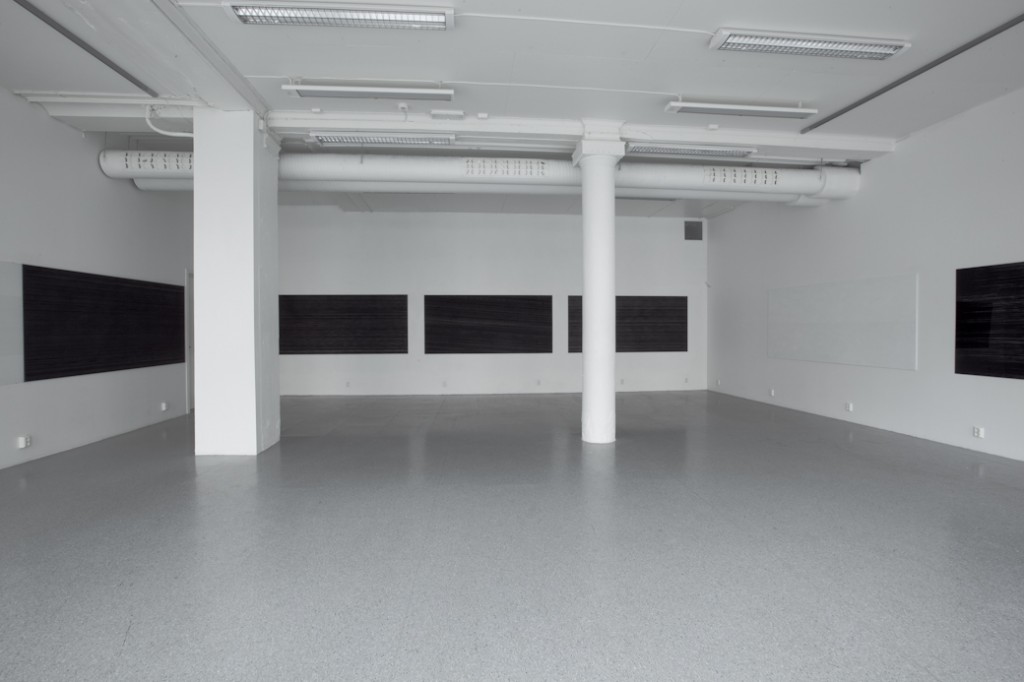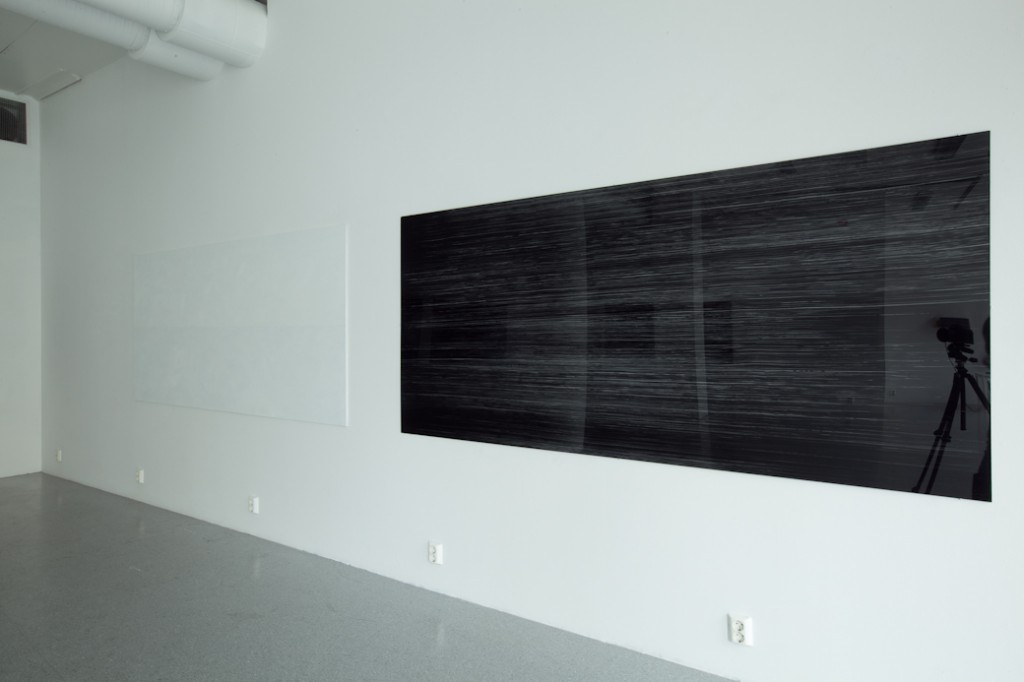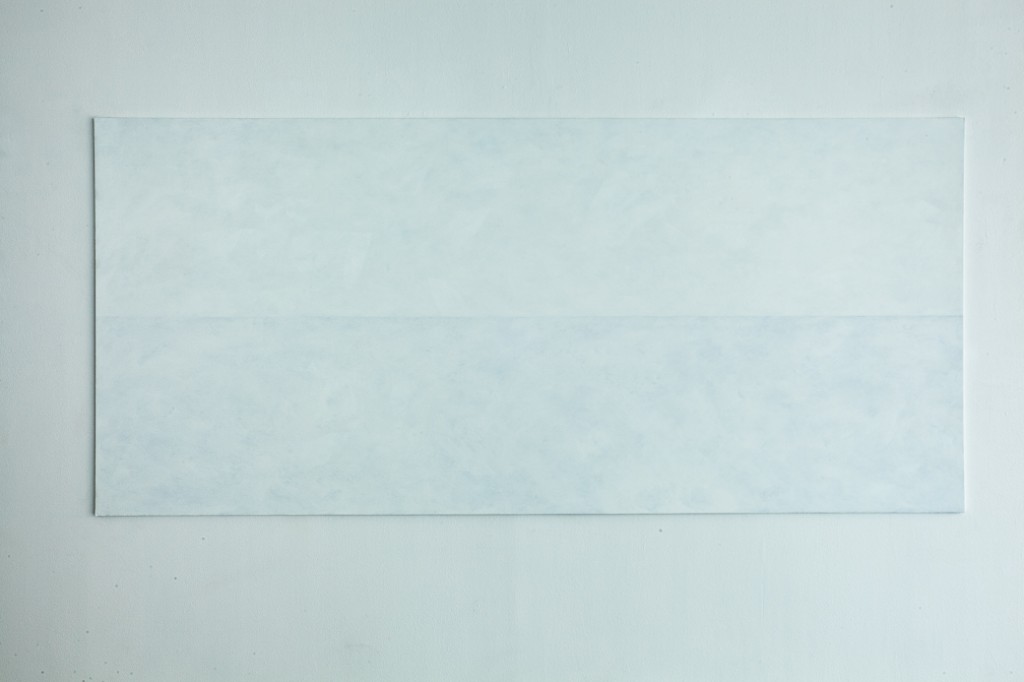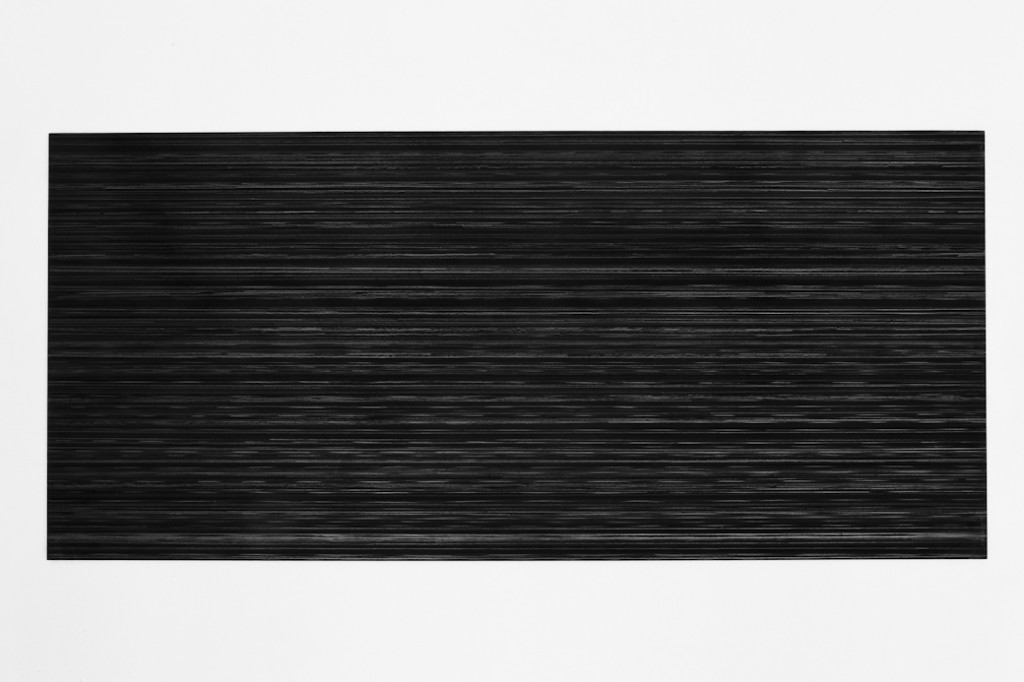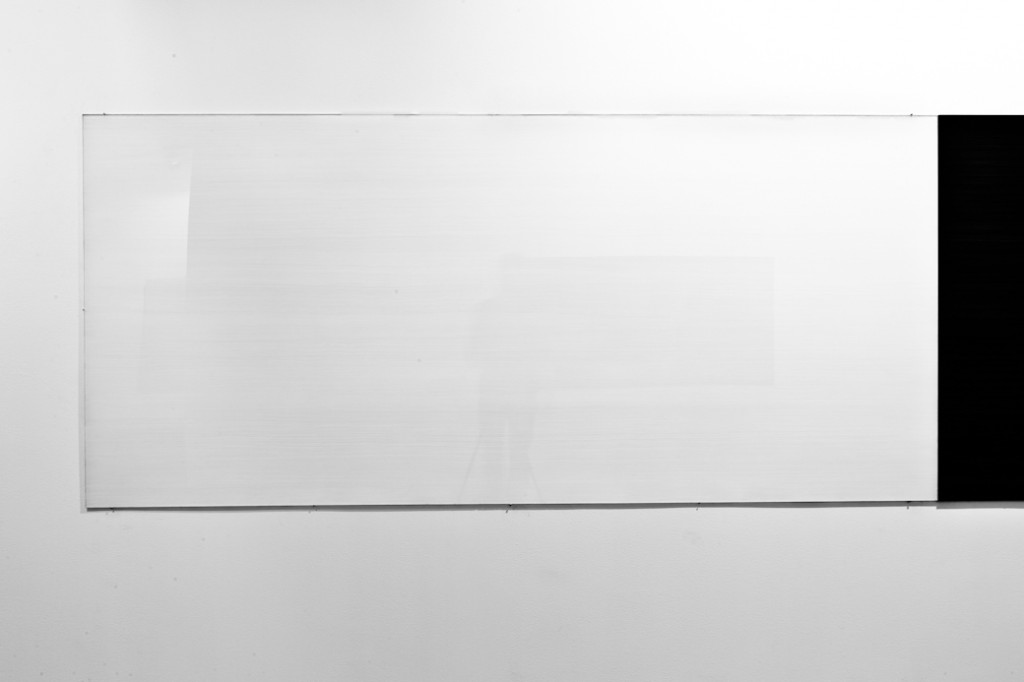Looking for Painting was the final exhibition in Patrik Entian´s research projekt Looking for Painting, at Bergen Academy of Art and Design 2007 – 2011. The exhibition took place at gallery ROM8 in Bergen, in September 2011.
The show was approved by the committée of the Norwegian Artistic Research Programme http://artistic-research.no/?lang=en
The phd was finally finnished in 2014 after completing the reflection text and the viva voce at the Art Academy in Bergen. See the critic reflection here (only available in swedish): entian-kritisk-refleksjon
A catalog followed the exhibition in ROM8, with a text describing the methods of the research. See the text under the images that follows.
The following text was written for a catalog that accompagied the exhibition Looking for Painting at ROM8, Bergen in September 2011 . The catalog can be downloaded as a pdf KATALOG EN-OG-EN
Looking for Painting
Bergen – Antarctica.
Since 2007, I have been working from my studio in Bergen on a series of paintings using only one image source to paint from. I have been monitoring and collecting images from a webcam placed in Atka Bay on Antarctica. The camera is maintained by climate researchers on the German research station Neumayer. The image shows a vast and deserted landscape of ice, from which one can observe shifts in the landscape, as the picture is updated once every ten minutes. It is a detail of an image which is hardly an image at all. Many days are foggy and show slight shifts in scales of grey, while during all the hours of darkness, one can discern little more than some very slight variations of stripes across the screen, when the camera cannot transmit an image of the landscape. When it is winter here in Bergen it is the opposite season and summer there, and you can see the brim of the ice by the ocean quite near the webcam. Glacial mountains pop up in picture after picture of endless light where the sun never sets. When it is summer here, the deep darkness of winter prevails on Antarctica and at best, a faint grey light in the middle of the day. The weather, light and quality of the images vary. Hardly anything happens and yet something is always happening.
I have been watching webcams from around the world for a long time and found it fascinating to be able to travel with my gaze from place to place. To regard a distant landscape from a webcam on your computer screen, evokes in you a vague sense of being where you are not. There is something riveting about the possibility – to immerse oneself in the landscape being beamed from such an inhospitable location as Antarctica, meanwhile being engaged in something which today is entirely mundane and not the slightest bit spectacular. Pretty much any destination in the world is reachable via online cameras and simultaneously possible to locate on Google Earth maps. You can watch the sun rise over Mount Fuji at the same time as it is setting behind the silhouette of Montreal’s skyline. A succinct sensation of simultaneity in a world where everything is in constant flux. In spite of all the available possibilities to navigate across the world, I have for some reason become entrapped by the webcam placed at the Neumayer Station and can not stop watching it. The distance to the South Pole with its opposite seasons, in regards to my studio, the vast uneventful nature of this virgin wilderness, the limited information supplied by the little framed image, and a strange sensation of belonging, or proximity to the deserted landscape fascinates me, and keeps me returning to this image daily.
On the official web site for the research station there are regular weather updates from the region and information about how scientists are conducting measurements of the temperature in the water below the ices, monitoring the coldest waters on earth. It is also possible to listen to recordings of singing whales who thrive in the cold waters below the ice. On clear days, one can see two small flags pinned to poles that have been raised on the ice and that appear almost in the centre of the image. There is no information on the website that explains why they are there. Perhaps the flags denote the location where the measuring instruments are lowered? I have never seen any persons in this landscape though on a December day in 2008 two snowmobiles stood parked there in a couple of stray images, but in the next updated image they were gone again. Only the tracks of the snowmobiles remained for a day, before they were erased again by the wind.
When I began to paint pictures from the webcam, I imagined myself trying to travel to the place where it was positioned, to paint the landscape and compare the difference in approach between painting in open air and from watching that same motif on a computer screen. After a short period of work however, I realised exactly what was so interesting about investigating the landscape from a distance. It dawned upon me to what extent we are seeing the world through the screen of a computer and how those images are increasingly shaping our comprehension of the world, as a type of filter to reality, or an instruction for how to interpret reality. Even if I was, and still am, attracted to the landscape transmitted from Neumayer, with its simplicity and endless horizon, I soon understood that it was just as much the image on the computer screen as the actual landscape that made me want to paint it.
This multi-layered distance to the landscape, both physically/geographically and by way of the filter of the screen, caught my interest in a number of ways, and as I had just been as researchfellow, I saw an opportunity to challenge and immerse myself deeper into my own work. I have always been a restless hunter for motifs, chasing as many different motifs as possible. But rather than to keep working in that manner, I let myself become obsessed by the idea to over a longer period, the entire scholarship period, paint pictures using only this webcam motif as a source. Despite the daunting thought of working with such clear restrictions and that the work could possibly become very tedious, I simultaneously saw the array of possibilities in these images. A framed landscape from the other side of the planet that slowly or suddenly shifts in semblance became sufficient in itself. And in addition, interruptions such as night, fog, technical problems and other events within the framed image, lent to a further potential to work abstractly with painting. It was a new challenge, to perhaps dare to tread yet another landscape and an imagery which I had yet to comprehend but that which for that very reason lured me in.
In order to investigate properly from a far distance and in this way emphasise the painting, I decided to exclusively paint from inside my studio in Bergen. My base and platform, which was now to serve as my observatory, for the task of a repetitive painting and a transformation from image on a screen to painting on a surface.
To visualise the visible
The flow of images produced by the webcam, streamed out via the internet and in to my computer screen, challenge me as a painter. The images only exist for a brief moment and once replaced are gone for ever. They are nearly meaningless in their transience, appearing and disappearing on the screen. They don’t exist in any other form, than as information inside a computing machine and as pixels on a screen. Although I often do feel that the images are interesting, the daily monitoring has over time also established a prosaic or neutral relationship to the representations of this landscape. I inspect them while at the same time I don’t see them.
This work with painting from the images from the web-camera has made me realise how painting, once again, might function as an interesting and relevant medium with which to depict the world. In the flow of abstract information, painting functions as a documentation and a medium which freezes the flow of time and at the same time portraits and demonstrates it. To me, painting is primarily about observation and transformation, wherein the end result is affected by the varying conditions of events, traces and impressions that constitute the process. When I transfer onto painting what is transferred through digital grains onto my computer screen, the fleeting images become manifest in that they are then re-established in a physical reality. I try to establish the actual transfer into painting in the most concrete way possible. In this way, painting functions as a method to register and verify, and as a medium which by imitating what we see, also investigates what it really is we are seeing.
Through approaching painting in a concrete way I want the finished picture to function as a signal or an argument, with as little surplus information as possible. The traces of colour and brushstrokes in the painting become a form of documentation which registers the fleeting webcam-image before it disappears for ever, as well as a documentation of the painting process. Concrete painting does not imply that the painting must look like the source photograph, but that the painting communicates a level of acridity which to me has the maximal magnetic effect, while simultaneously being neutral registrations of the images from the webcam. This transformation from abstract information to material renders the images accessible. The materiality of the painting manifests the image, making the pictures real and in this way also more focused than photographs. I conclude that the painting is accomplished when it is concrete in its depiction, while at the same time evading every sense of articulation.
When a painting operates as a sign or signal, carrying no or very minimal symbolism, it appears to me as neutral. That is the gaze with which I have always enjoyed observing paintings from a variety of epochs in art history. I perceive paintings by the German Romantic painter Caspar David Friedrich, and the Norwegian Neo-Romantic painter Harald Solberg, as recordings of observations of the landscape. It doesn’t matter how aware I am, how aware we all are, of the extent to which they are charged with symbolism, or how eagerly the Romantic painters wanted to approximate the sublime experience of landscape through their pictures – and despite the fact that I can but vaguely grasp the symbolism embedded in the codified language of that age – the effect these paintings have on me evades articulation. There is something about the manner in which they are painted that radiates that particular focused presence which makes them real and unreal at the same time. It is almost as though you are standing amidst snow-clad spruce trees on a cold winter day and listening to the thunderous silence. It is a form of unreal realism which successfully reaches my body. In spite of this sensibility, though, my own experience is that the visual language still overpowers the symbolism. Another example is John Constable’s famous cloud studies from 1822. Through these cloud studies, this Romantic master investigates how clouds look and how they might be painted. On the reverse side of each painting, he indicates the time, weather condition, wind direction and other details. The series constitute a form of collection of evidences for his investigations, as much as they are investigations in themselves. Sept 21. 1822_past one oclock. looking south. Wind very fresh at East, but warm.3
The darkness of the camera and the light of the screen
The studio work has gone through different stages, in which I have exposed myself to different approaches to the webcam as a painting source. By establishing restrictions throughout different stages of experimentation, I have at the same time limited the possibility to employ too many approaches to the motif. Rather, I have focused on investigating how painting operates as a way to document the stream of webcam-images. I have been particularly preoccupied with working in different series, through which the entirety helps to illustrate the passing of time and repetition. While simultaneously, I always aim at establishing each painting as a statement that might thrust the viewer back in time, once again. My anticipation is that many paintings seen together may be perceived as a movement or something that flows, where one can halt inside of a painting and sense presence, tranquility and flow.
During the first period, I painted mainly the clearly representative images from the webcam, in which the landscape is more or less discernible, and through which I retrace the shifts in the landscape as a form of diary paintings. Even if this implied a new and interesting way to paint a landscape, I was still quite early on in the process drawn to the shifting abstract images which for a variety of reasons kept popping up on the screen. The work which I knew was going to go on for several years made me want to propel, investigate new fields and penetrate deeper into painting itself.
When it is dark and the camera is unable to capture the landscape due to insufficient light, a faint colour-shifting raster of tilted and horizontal stripes appear on the black image. The technology of the camera produces a type of self portrait of abstract compositions on the computer screen. As I was working on these pictures, I wanted to reach a blackness which sucks the attention into the picture and to the entire surface, by producing as dry and lacklustre veneers as possible. Using plaster and rabbit-skin glue mixed with dark pigments, generally iron oxide black and ultramarine blue, I extracted the black background out of three to four layers, rendering an entirely dry and mat, black bottom. Thereafter, I drew the lines which comprised the stripes in the image, using different pastel and graphite pens, and the support of large rulers. The size of the paintings vary, but they are consistent within a series, and kept to the same relative dimensions as the webcam-image in relation to the computer screen.
Throughout the course of treating these abstract webcam-images, I have become increasingly interested in the light from the computer screen and how it so effectively calls for attention. What is it about the TV or computer screen that more or less automatically pulls the gaze into them? I don’t believe it is solely a question of what is unfolding on the screen, nor simply that the light blares at us. It seems to be rather, that the light is coming from inside the image, which in turn demands such complete attention that we are fully snared by its presence. This light has challenged me to make paintings that are more arresting than the light from the screen, particularly in paintings depicting foggy days.
The pictures of foggy days have served as model for a series of paintings through which I have, in several ways, tried to elicit an interesting “glow” of grayish hues, where the light dwells inside of the painting. In these abstract images of daytime, the camera operates conventionally, even if the image displayed on the screen shows abstract monochrome pictures that shift between different denominations of gray every ten minutes. Sometimes one can detect a discrepancy between the denominations of the sky on top and the the somewhat lighter ice in the bottom half of the picture. Yet everything is out of focus. The images’ minimal expression and my ambition to challenge the seductive allure of the computer screen, have petitioned me to conduct a number of material explorations for these more or less monochromatic works. When I started, it became apparent to me that when there is little to focus upon in a painting, the attention is drawn towards the materiality and how it contributes to the experience of it. I have primarily explored different ways to extrapolate an opacity from the colours in order to generate a feeling of being sucked into the image.
In these monochromes I have largely experimented with oil paints mixed with wax paste made from a fusion of bee wax and turpentine. The fusion properties between wax and turpentine have lent me both insights and confusion, but mostly they have helped the paintings arrive at what I was intending to achieve, in an interesting way. The colour does become mat, but not in the same dry way as the pictures with the black plaster and rabbit-skin paints, but in a way which produces an optical illusion of being both mat and greasy at the same time. A veil that drapes the colour emerges, and though this veil makes the colour less clear, it also traps the colour inside the painting, from where it shines. I have also experimented with monochrome paintings without wax. In those cases, I have applied thin coats of oil paint, laying on the surface without the slightest volume, complimenting the bee wax paintings when mounted next to each other. A form of mutual contagion is sparked and in this way I feel that they demand the attention of an image that glows from within.
To examine the opposite, and use entirely blank surfaces, I have tried painting on the back side of acrylic glass panes which are hung with the unpainted front side toward the viewer once the paint is dry. In this case, the painting must be painted backwards, by first applying the foreground, then the middle layer and the the background last. The paintings on glass are also an experiment to examine how the light can radiate from inside the picture and an attempt to see the effect of imitating the glass-like computer screen. Despite the hard and shiny surface which partially creates annoying reflections, some of them function due to that the brushstrokes of oil paint emerge so distinctly behind the glass and by that the motif reproduce a clear light from within. It makes them appear as screens containing organic material with an infinite quantity information. Motifs without a distinct light, on the other hand, I find more static and deprived of energy behind the shiny, hard surface.
To depict without representing
When I began using the abstract motifs, I entered a domain I have been fascinated by for a long time but never dared or felt capable to work within; a domain comprised of bold and vast colour surfaces, and the monochrome paintings of Modernism. Painters of High Modernism, such as Ad Reinhardt, Clyfford Still and Barnett Newman, were preoccupied with the idea that painting does not reference anything outside of the painting. This has been considered a definite and closed chapter of art history, and which has seemed impossible to develop any further even if I have often wanted to understand how one paints abstract, seeing as my own work has always referenced something from my surroundings. In the visually abstract webcam images, there lied suddenly a possibility to approximate abstract painting and instead of avoiding the question, I wanted to test this approach as an attempt to perhaps liberate myself from thinking and painting representationally.
Throughout these works I am also using the interferences that emerge on the webcam-images as a source, but I am trying to expound a type of sensation of interference rather than imitations of it, to create something I label visual noise. They are conducted either on paper och black or white plaster-laden mdf-boards, upon which I have drawn with the broadside of oil pastel crayons with a light hand across the foundation. Due to the crudity of the paper or the brushstrokes in different layers in the foundation of the mdf-boards, a pattern emerges from the crayon line. It is difficult to control the outcome and make these pictures function the way I want them to. Just as suddenly as the picture is good, it is suddenly ruined by a stroke or two too many across the surface. If they end up looking like some variety of tracks in nature for instance, or like a paved street, they are no good. When they work they represent something which does not represent anything. The pattern that emerges assumes a moiré-effect as the crayon emits colour with both regularity and irregularity, lending a sharp expression to the painting. That is when the pictures become visually surprising.
The experiments, however, failed in the sense that they have not brought me closer to abstract non-representational painting. Instead, they have brought me to the realisation that my work will always work as representations of the world even if the paintings are abstract in appearance. The visual noise emerges with full clarity as something I am forced to recognise as representational paintings, regardless of how hard I try to avoid recreating an image. They depict something even though I can not see what it represents. The success with these experiments is on the other hand, the realisation that this has generated an entrance into a new capacity, a position from where I can now allow myself to explore monochromatic and abstract motifs in my own way.
The painter Robert Ryman’s art, for me, functions as an interesting link between modernism’s dogmatic rules around abstract painting and how my paintings work best, when it can both show something in a neutral manner while simultaneously creating a presence.
To Ryman, his abstract paintings are mainly about the fact that what we see, and nothing more than that, is reality. That nothing else is on the canvas than the paint and traces of activity. He relies entirely on the materials at hand in the painting medium and that his images depict nothing but reality. This realism that Ryman stands by appeals to me very much. His pictures do not represent anything, yet one can not say that they are abstract either, since they actually portray what has been done on the canvas.
I also believe that painting can express a type of realism which lies in its own physical existence, but to me, painting is also about reproduction. In this way, my painting always represents something outside of the painting and I am in an entirely different sense than Ryman, interested in using the painting to create a sensation. I also want to reproduce the source in way which makes it function better as painting than the source motif. I am not interested in a photographic realism, but rather the material qualities of the painting, in correlation to that the motif either surprises or is so recognisable that the painting glares back at the viewer. When Ryman speaks of traces and colours on the canvas, I understand completely, as this is exactly what my painting is also about. At the same time, though, this isn’t all I see. To me, the traces and the paint always induce reproductions and imitations of something we see in our surroundings.
By creating a representation in the most concrete and sharp possible way, I want to bring about a maximal attention in relation to the depicted motif. That is when I sense that the pictures express a neutrality. This is something which is crucial to me in regards to how I perceive the paintings as functional or not. I find that several of the abstract, and above all the monochromatic paintings satisfy the level of concentration I have tried to achieve, as neutral depictions with presence. The most central phase in my work, is when these elements emerge, and it is usually the criteria that defines why one painting works better than another. At the same time, it is difficult to explain what it is that works, it is a simultaneously unmentionable and obvious characteristic which is inhabited in the how and what a painting relays.
In spite of the fact that I was concerned with equivalent painterly issues of presence and neutrality when I made the first pieces which clearly depict the landscape, I have rejected far more of those than of the abstract paintings. Even if they often work well as neutral depictions, I feel that they lack something of the presence more often inherent in the abstract paintings. Perhaps the capacity to enter into an abstract domain made me more critical of the landscape images, though keeping in mind, that the abstract paintings, while looking abstract, they still depict both the actual landscape and the webcam-image of the landscape. The focus on the materiality of the painting is likely an effect of the the minimal information conveyed by the abstract appearance, which in turn has triggered a new sense of excitement and subsequently made me pay more attention to this when I paint. On a whole, all of this contributes to define a stronger presence in the painting.
The webcam as archive (Behind the interferences lies the sublime landscape)
Ever since I started painting I have been preoccupied with painting different forms of landscape and with representational painting. I often see myself as a landscape painter who takes different positions to from a distance regard the entirety. To paint the sprawl of a landscape is like traveling in time. One approaches the unreachable horizon and paints pictures picked up from art history and life, while time itself ceases to exist. As I have now, over several years, been painting a landscape which is so devoid of content and in addition via the computer screen so remote, I imagine that I am beginning to understand why I was drawn to precisely this webcam image. The character of landscape invokes in me a calming feeling of home and even if it doesn’t look much like it, it still reminds me somehow of the landscapes of my childhood, from the Bohuslän archipelago. A landscape I have tried many times but never managed to paint. Neither directly in front of the landscape nor from photographs has it been possible. It is too close to me. Far too many images of it are stored in my mind for me to know what it shall look like, which makes me critical and causes it all to crumble. I try to express it all at once and realise that it is impossible.
The stream of images across my computer screen are in some respects equally overwhelming as the landscapes from my childhood. Every image the webcam at Neumayer Station depicts shows a sublime landscape. Pictures of clear clear days, but also those where the visibility is poor, and the interferences, are representations of one of the last intact wildernesses on earth. The reason I can paint this landscape, is that I am located at a distance, to a picture framed by a computer screen as a barrier between myself and the depicted image. The screen transforms the pictures into information.
On the Neumayer website there is no information on what the researchers actually use the images for, but to myself, it functions as an instrument which enables me to examine a landscape which in many ways displays that which I have failed to paint my entire life, the sublime landscape.
Being located at such a great distance to the landscape I am painting has made me think about how the location, regardless of how far away it is, whether it surrounds me or is updated from a webcam, always is where I am painting. The landscape and the image of the landscape converge. At the same time as I am painting the distance, I am in equal measures painting the proximity, a proximity so tangible that I can reach out my hand and touch it. This feeling of proximity supplies great contrast to the infinite flow of images, from webcams, of landscapes; as great as the impossibility to paint what to myself, is the unmitigated sublime landscape.
The art historian Jan Verwoert, with whom I have discussed this, describes how artists such as Christian Boltanski express the sheer impotence human beings experience when confronted with an archive, as for instance a large library. History itself is encompassed by it, and a human being can never acquire it. Once one fathoms the fact that one will never have time to read all that is there, the powerlessness imposes itself as an abyss. He likens this inadequacy to being faced with the sublime. He actually goes as far as dubbing the historical archive sublime in itself.
Upon this, he drafts an alternate artistic strategy to approximate the archive; by picking out bits, the artist can personally assemble and display an archive based on documents particular to her own investigations. What emerges, is the story told through the fractions of the whole. The spectator is invited to reassemble from fractions of these fractions, and through this interaction, she becomes an active participant in history.
Translated by Steven Cuzner


